Written by Étienne Bassot and Wolfgang Hiller,

A year and a half has elapsed since Commission President Jean-Claude Juncker took office on 1 November 2014, having presented the ten priority areas which would serve as his Commission’s guiding lines for the next five years and which would therefore form the basis of its annual work programmes. As the European Commission approaches the midway point of the second of those work programmes, and begins the preparation of the third, this publication seeks to provide an overview of the progress made and the work accomplished so far in each of the 10 priority areas, taking stock of what has been achieved on the path of ‘getting Europe back to work’, and identifying those areas where difficulties have been experienced or further efforts are required.
The document also considers the implications of the different structure and more political nature of the Junker Commission’s work programmes compared to those of the Barroso Commission. In this respect, it notes that, although this may bring greater flexibility, helping to shape the coordinated approach of the institutions, it also makes it more difficult in some ways to identify and anticipate the precise nature and timing of the individual initiatives to be expected. While the new Interinstitutional Agreement on Better Law-Making, adopted in April 2016, contains specific provisions formalising the increased involvement of Parliament in the annual programming exercise, and in particular on the content and follow-up of its initiatives, the rather general nature of the programme itself may complicate the task of scrutinising its delivery. The structure and modus operandi of the Juncker Commission is also very different to that of its predecessor, having moved towards a more thematic, cross-cutting approach which seeks to better reflect the interconnection of policies and the importance of political coordination and coherence across sectors. Some commentators warn, however, that overlapping responsibilities in some areas could lead to conflict, putting political coherence at risk.
During its first year in office, the Juncker Commission adopted strategic documents on all ten of its stated priorities. The 2016 work programme, concentrating on five major priority areas, promised a continuation of that initial thrust, with a large number of envisaged legislative and non-legislative initiatives and policy packages responding to a varying extent, and sometimes differing levels of ambition, to Parliament’s concerns. In some of the priority areas, all of the originally promised initiatives have already been delivered. In others, there still remain large gaps. The rate of progress on those that have been delivered also differs considerably. While some have already been adopted and others are undergoing consideration in Parliament, or are subject to ongoing negotiations between Parliament and Council, progress on many of those identified by the Commission as a priority is often solely dependent on Council, Parliament having already adopted its position on the matter, in some cases as long ago as 2013. A detailed comparison with Parliament’s resolution on the 2016 programme, also reveals that there remain areas where its specific requests for action have still not been addressed.
Read the complete in-depth analysis on
‘The Juncker Commission’s ten priorities: State of play in 2016‘.

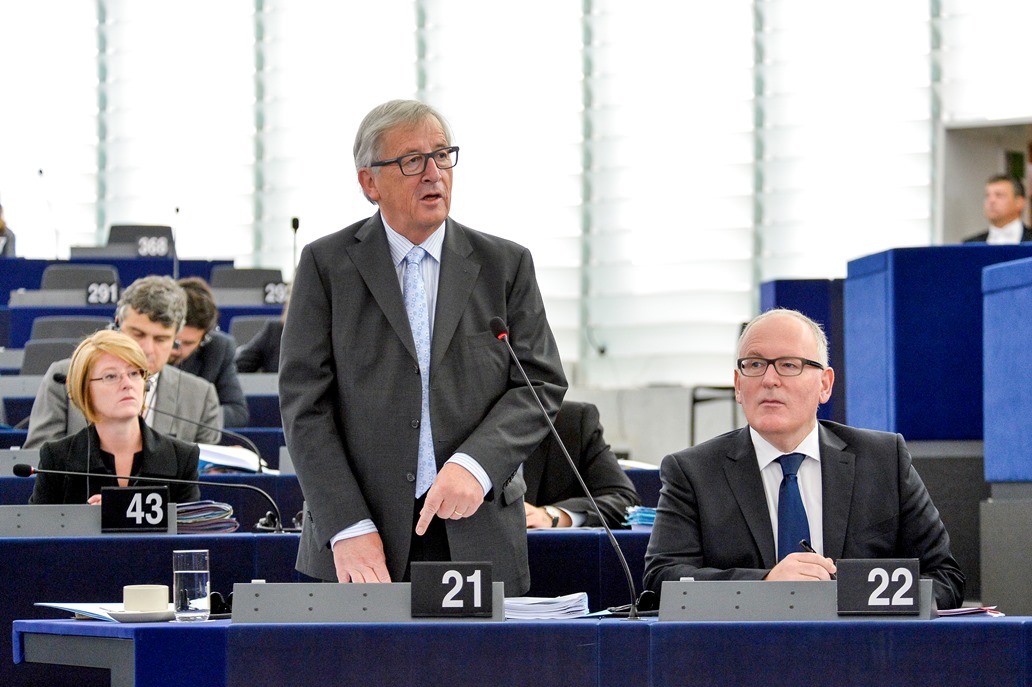

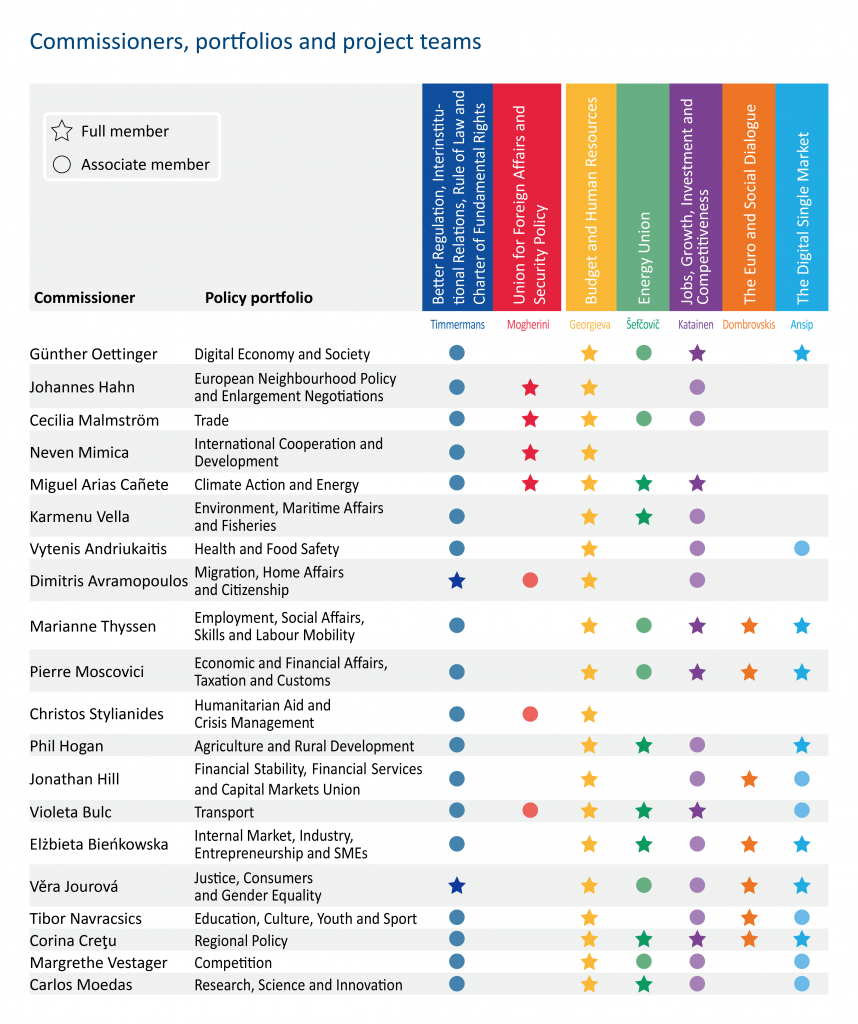
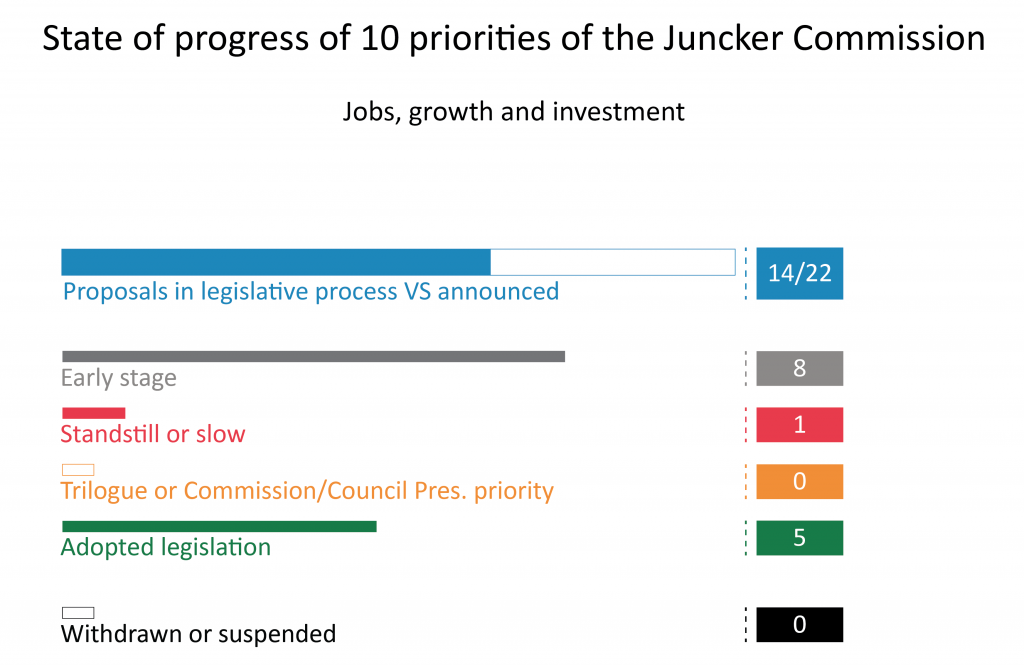
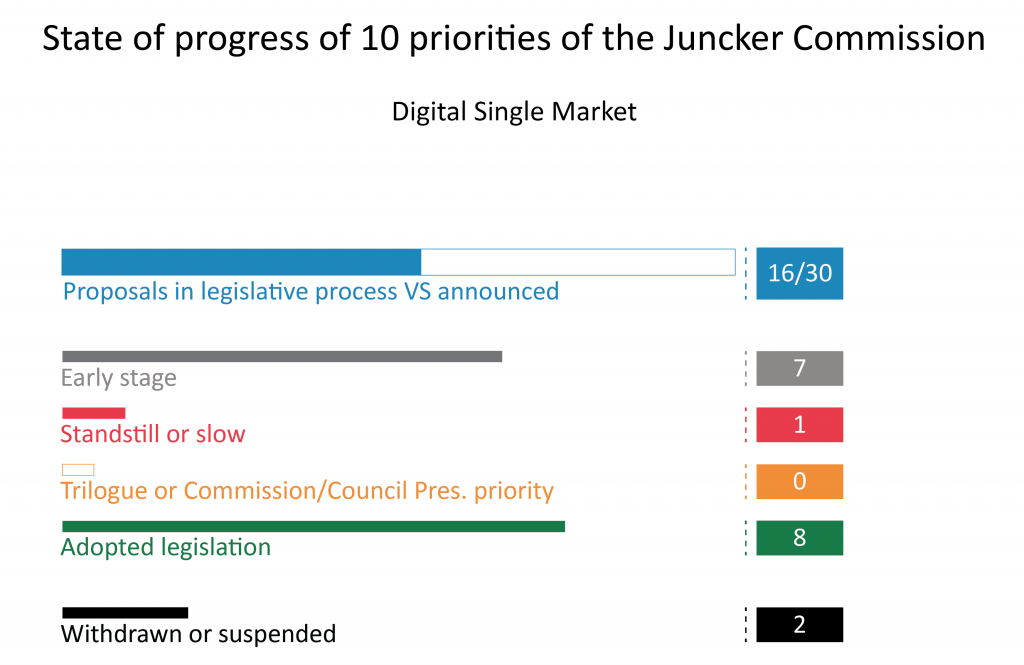



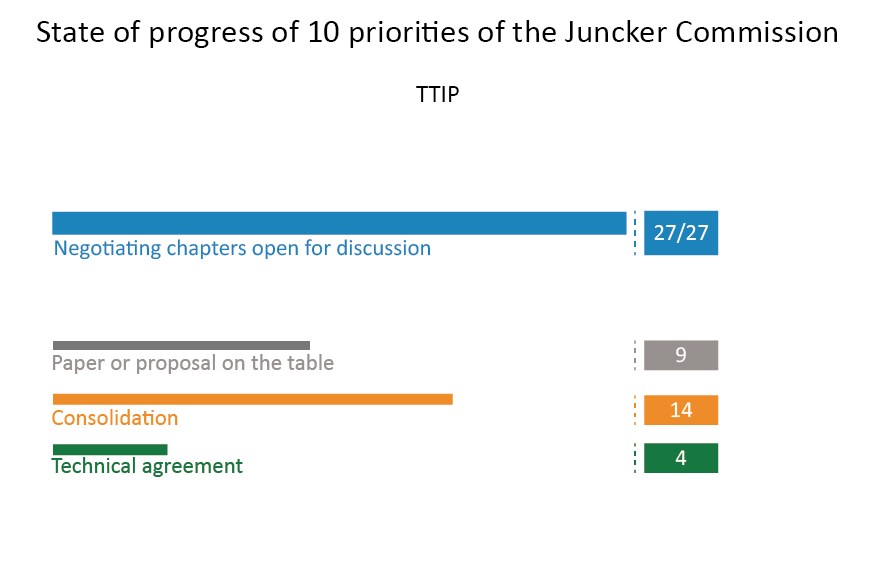
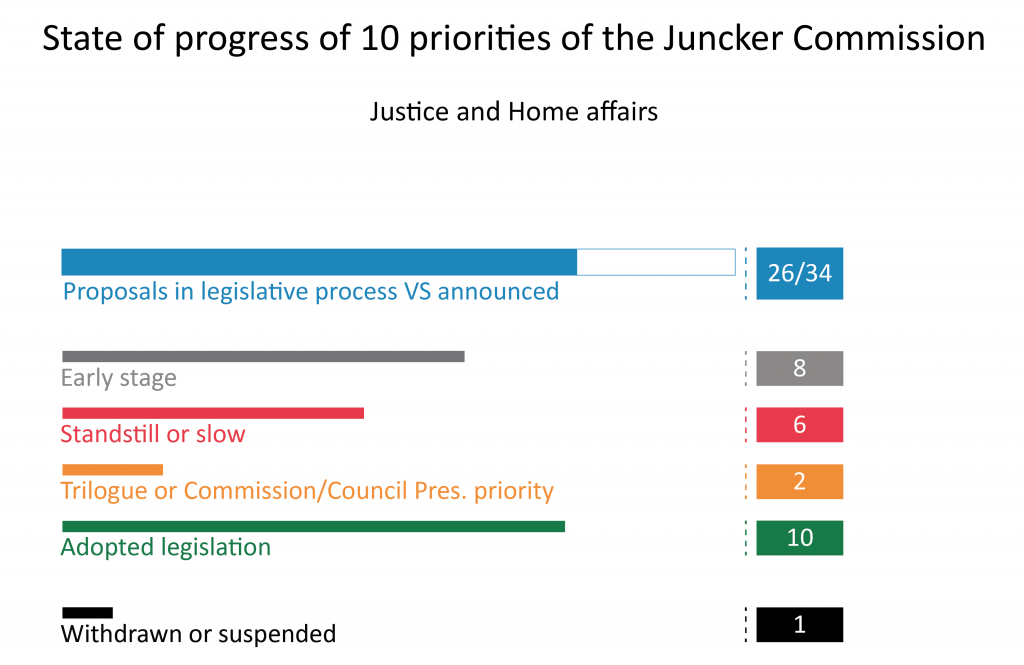
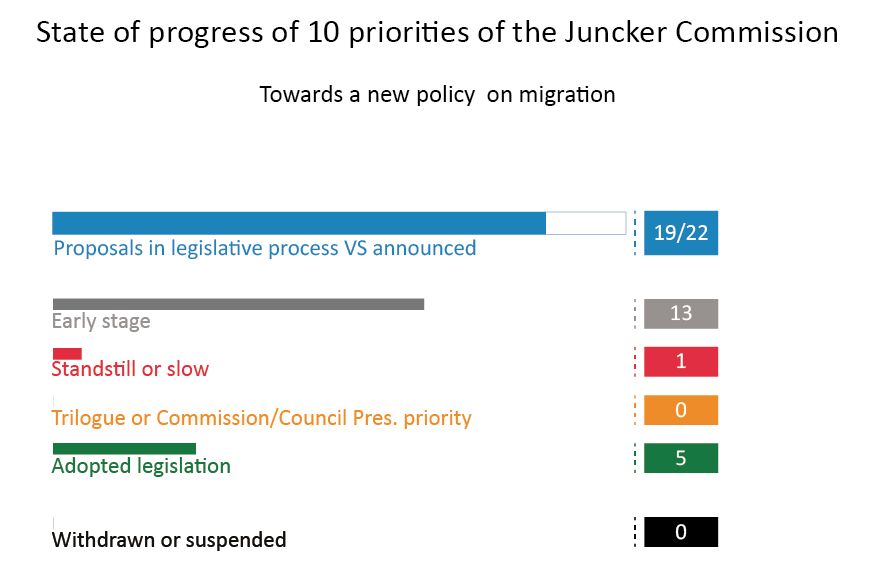
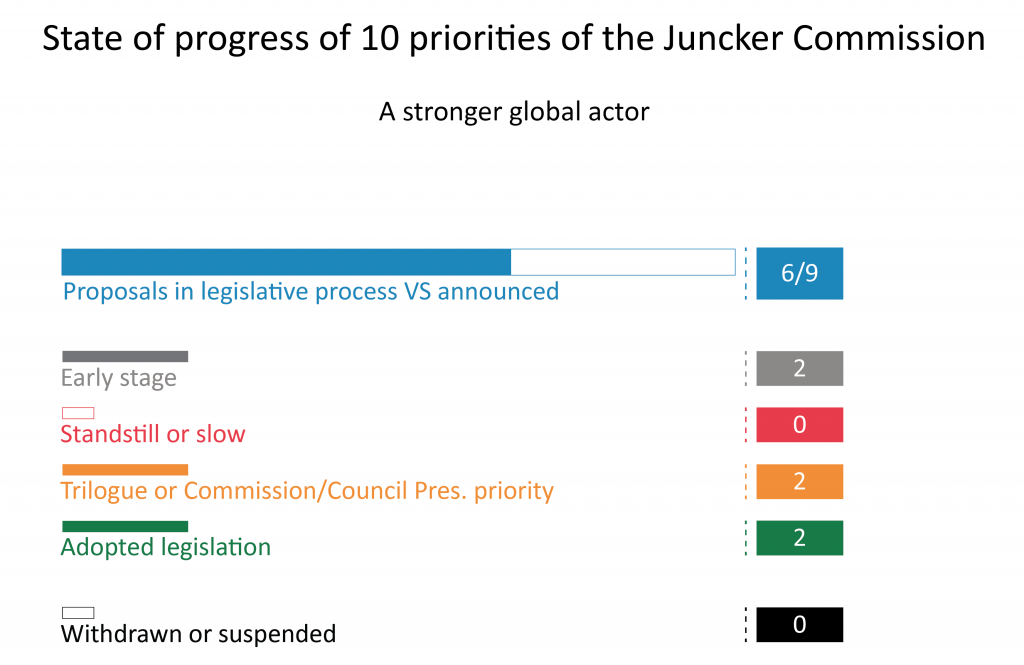
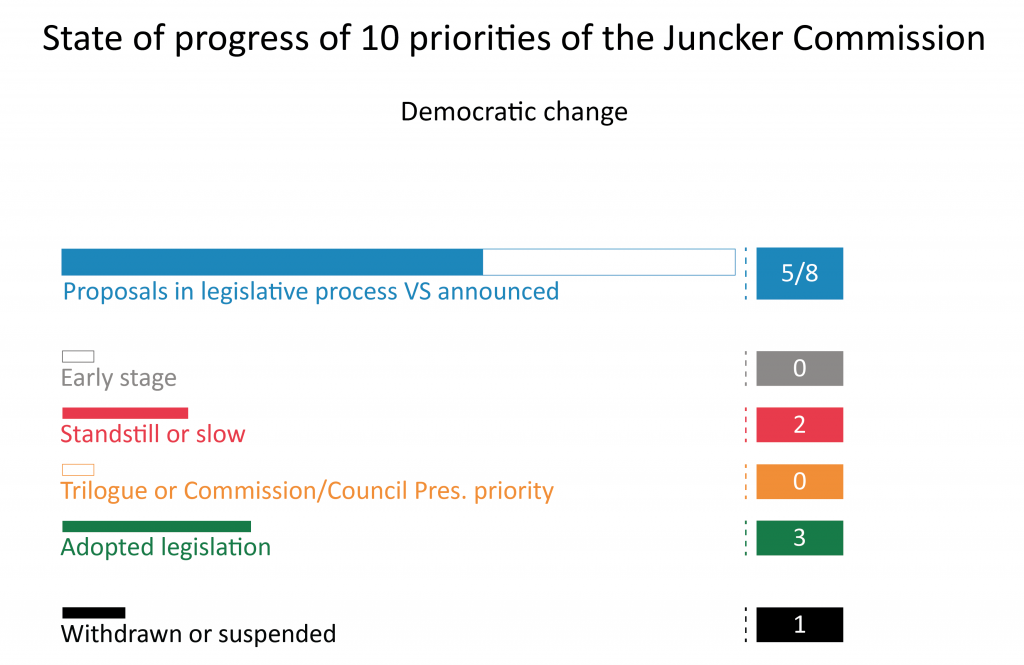






[…] facing the Union. It is a natural next step, following on from the recent EPRS paper on the state of play of the Commission’s ten policy priorities, published in May […]
[…] to Parliament. The speech provides an opportunity to assess the Commission’s progress against the ten priorities set by Juncker in 2014, particularly in view of the continued gap between EU aims and citizens’ […]
[…] to Parliament. The speech provides an opportunity to assess the Commission’s progress against the ten priorities set by Juncker in 2014, particularly in view of the continued gap between EU aims and citizens’ […]